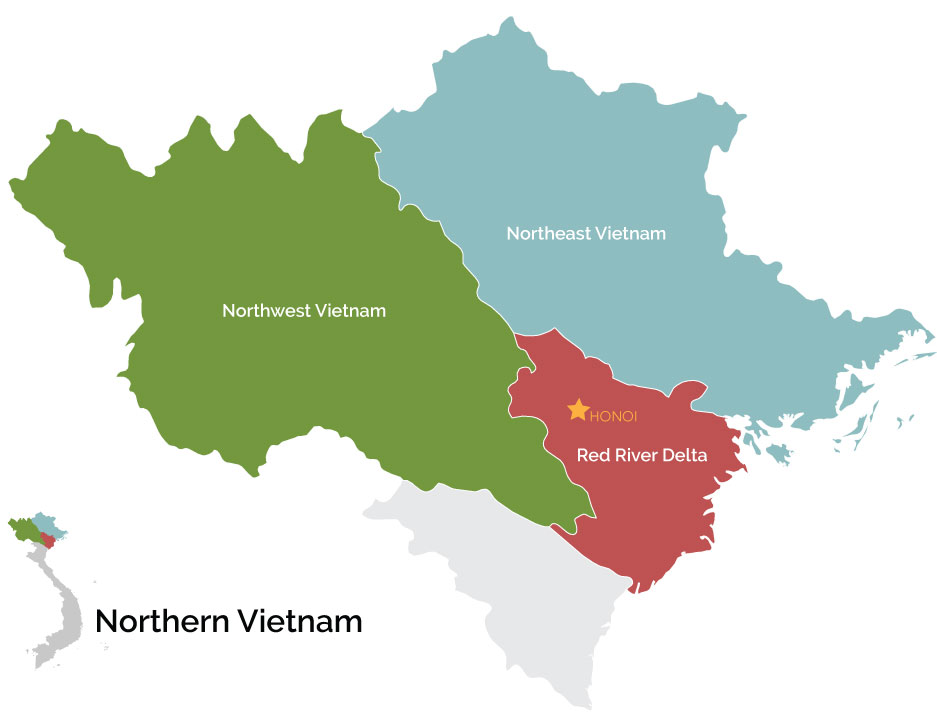North Vietnam
North Vietnam is a region rich in history, culture, and stunning natural landscapes. It’s known for its majestic mountains, terraced rice fields, and the vibrant cultures of various ethnic minority groups. The area offers a mix of ancient history, colonial architecture, and unspoiled nature, making it a fascinating destination for travelers.
Geography
North Vietnam is characterized by its diverse geography. The region is dominated by the Tonkinese Alps, with the highest peak, Fansipan, reaching 3,143 meters (10,312 feet) above sea level. The Red River Delta, which includes the capital city of Hanoi, is a fertile area that has supported agriculture for thousands of years. Northern Vietnam also boasts stunning coastlines along the Gulf of Tonkin, including the famous UNESCO World Heritage Site, Ha Long Bay, with its emerald waters and thousands of limestone karsts and islets.

History
North Vietnam has a deep historical significance, being the cradle of Vietnamese civilization. The region was home to the ancient Dong Son culture around 2,000 years ago, known for their advanced bronze casting techniques. Hanoi, the capital city, has been the political and cultural heart of Vietnam for over a thousand years, since it was established as the capital by Emperor Ly Thai To in 1010 AD. The region has seen various dynasties, colonial rule by the French, and significant events during the Vietnam War.
Culture
The culture of Northern Vietnam is a blend of ancient traditions and modern influences. Hanoi, the capital, is a cultural hub with its Old Quarter, French colonial architecture, and numerous temples and pagodas. The region is also home to many ethnic minorities, such as the Hmong, Dao, and Tay people, each with their unique customs, traditional clothing, and festivals. These groups are particularly prominent in the mountainous areas like Sapa and Ha Giang. Vietnamese cuisine in the north is distinct, known for dishes like pho, bun cha, and banh cuon.
Best Time to Visit
The best time to visit Northern Vietnam largely depends on what you want to experience:
Spring (March to May): This is one of the best times to visit, with mild temperatures and blooming flowers. It’s ideal for trekking in the mountains and exploring cultural sites.
Autumn (September to November): Another excellent time, especially for photography, as the weather is cool, skies are clear, and rice terraces are in full golden bloom. Ha Long Bay and the mountains are particularly photogenic during this period.
Winter (December to February): Northern Vietnam can be quite cold, especially in the mountains where temperatures can drop below 10°C (50°F). However, this season offers a different, misty charm, particularly in places like Sapa.
Summer (June to August): This period is the rainy season, with higher humidity and occasional typhoons. While the landscapes are lush and green, the weather can be unpredictable, making it less ideal for outdoor activities.


